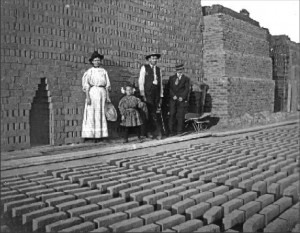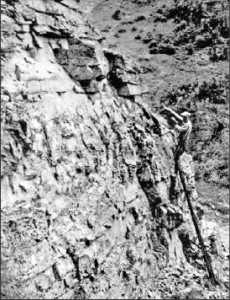by Annie Mueller
Published by the Colorado Council of Genealogical Societies, the Colorado Cemetery Directory helps the living trace their family histories. Lake County, Colorado has 33 cemetery entries in the Directory. Of these, 13 are listed as abandoned and 18 have “no record available of custodian/owner.” The oldest in that record is the Leadville City Cemetery, established in 1877, used for only two years and then abandoned.
Yet, there is another, older, “last resting place” in Lake County – the Malta Cemetery.
In From the Grave – A Roadside Guide to Colorado’s Pioneer Cemeteries, Linda Wommak gives the date of the first burial there as 1861, one year after the first gold mining claim was staked in California Gulch.
Considered a “flourishing town” by 1879, the town of Malta was located just south of Stringtown, outside Leadville, where U.S. 24 turns south, known locally as the Malta Curve. In that year there was great anticipation for a railway line’s imminent arrival which “will add largely to the rapid advancement of Malta”: this only four years on from the formal establishment of the town.
The Malta promotions noted above are from Clark, Root and Co.’s First Annual City Directory of Leadville and Business Directory of Carbonateville, Kokomo and Malta for 1879. More ballyhoo describes Malta’s real estate boom with “lots being disposed of quite lively … at from fifty to three hundred dollars each” and “as a place for recreation and investment, Malta is going to stand prominently forth for many years to come.” The town also consisted of: the Malta Smelting and Mining Company, four saw mills, streets and avenues, two billiard halls, a brewery, a confectionery, four grocers, three meat markets and at least one hotel, restaurant and saloon, among other establishments.
What remains of Malta today is a lone gas station and convenience store, a salvage yard, a logging operation and a few private residences. A forlorn red school house charms tourists and passersby alike as a white horse keeps a solitary vigil. Irreverent scars from heavy ORV abuse are evident in this area as well as trenches from long gone placer miners which lattice the forest floor. Scattered debris from years of careless or lazy occupation is littered in between doghair stands of lodgepole pine favored by deer and elk. The occasional fox is caught out by a quiet attentive walker. Red-tailed hawks patrol.
In these woods, in a place that sometimes seems as elusive as though protected by unseen forces, is the Malta Cemetery, once a public cemetery, now considered abandoned with no records available. Yet two monuments still exist there, poignant in the extreme. In light muted by the pines, two small children’s graves, adjacent to each other, can be seen. All around are vague depressions in the ground and bricks scattered here and there, remnants of other burials. But the sight of these two graves, so intact and distinct, compelled me to stop breathless for a moment, while taking them in, and only then tiptoe closer with a cautious sense of trespass.
One has a headstone with the remains of most of a name: Freddy. Its occupant rests in a sort of wooden crib made from heavy beams that might have come from mine supports. Stones have been placed in strategic places to hold up what is left of the small wooden enclosure which, long abandoned, has withstood the test of time, disturbed only by time and the extremes of the seasons.
The other small grave site nearby appears to be for infant twins. A double headstone with the faint outline of two bedded lambs facing one another is supported by rough rocks. A precarious wall of bricks surrounds the grave. Within these walls a coverlet thrown by nature changes season by season from pale to vibrant green, to rust and grey and then snowy eiderdown until once again spring adds its palette.
It is curious that these two little graves have somehow survived not only the rapacious mining eras which dug up just about every inch of Lake County over the last 148 years, but also the more recent recreational era that uses and abuses the forests so heavily. There is evidence of target practice on the headstones yet they remain, upright still, essentially undisturbed, the white of the headstones almost luminous.
Rumors speak also of an abandoned Chinese graveyard in the same area, of a wrought iron fence surrounding the plot, of characters carved into tree trunks to mark the spot. Considering the bigoted history of the mining era, it is difficult to imagine when such a graveyard would have been established. According to the Griswold’s History of Leadville and Lake County, legend has informed tradition that “orientals” were regularly ejected from Lake County, citing at least three grim instances: Oro City, 1869, Granite, 1874 and Leadville, 1879.
For over a century, however, the rest of Leadville’s immigrant populations flourished. Room was made for most all, even for their dead, though perhaps with no one left to mourn them. The mining legacy’s cycles of optimism in the booms and yearning during the busts, the transience of loyalties and families, means even “a final resting place” – like life itself – is not guaranteed.
Annie Mueller lives and hikes near Leadville but she comes and goes quite a lot.

